



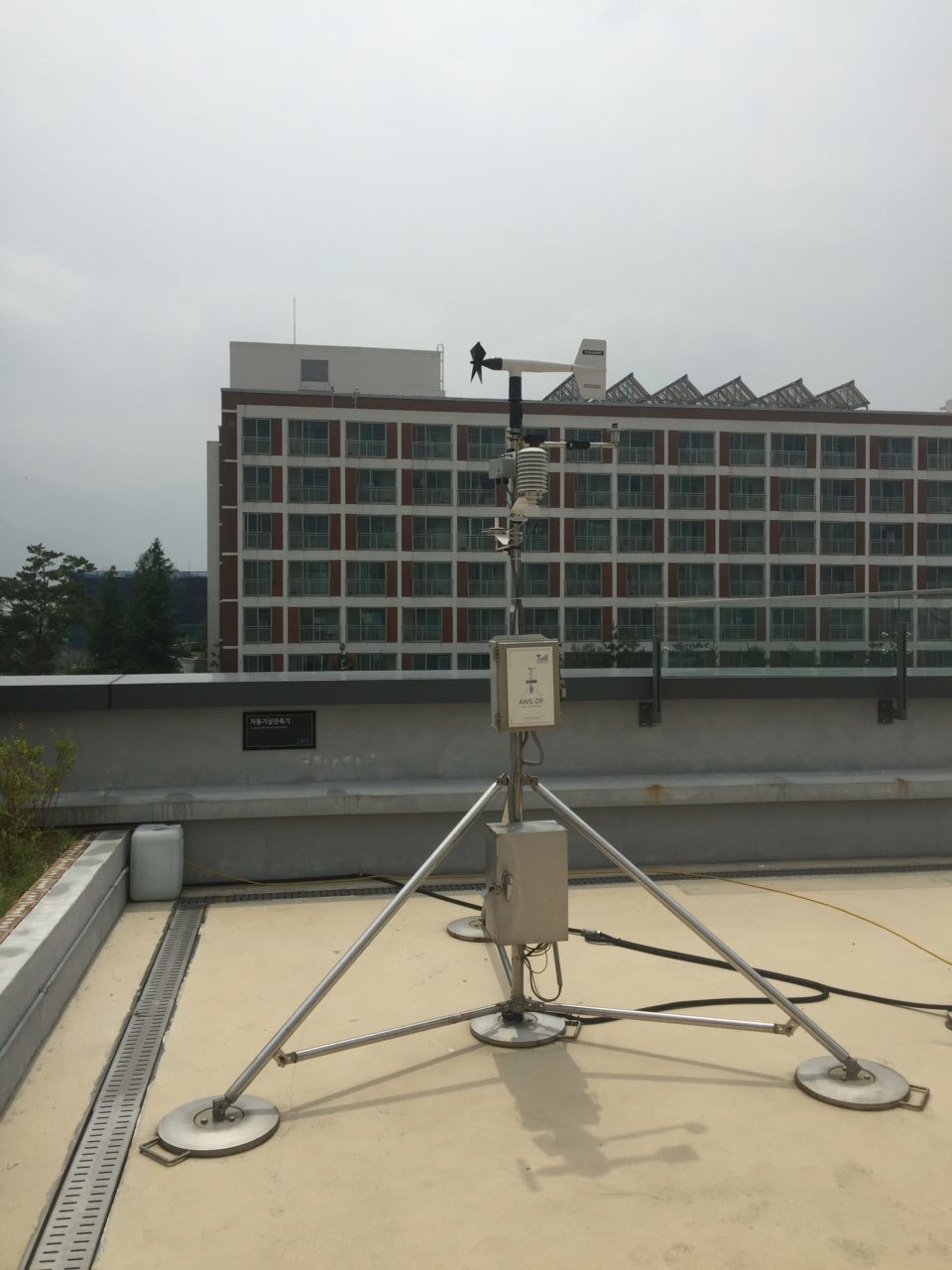
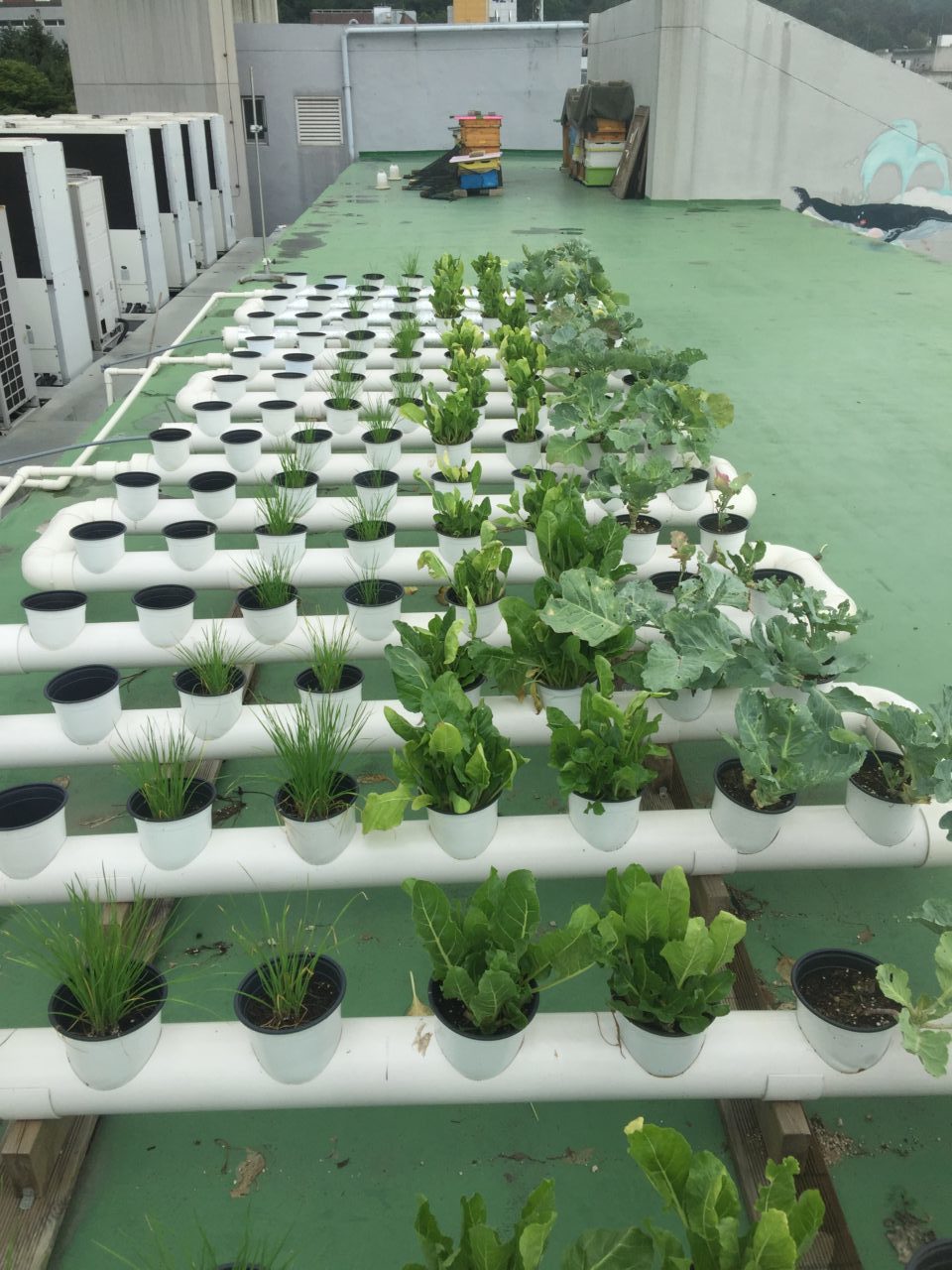




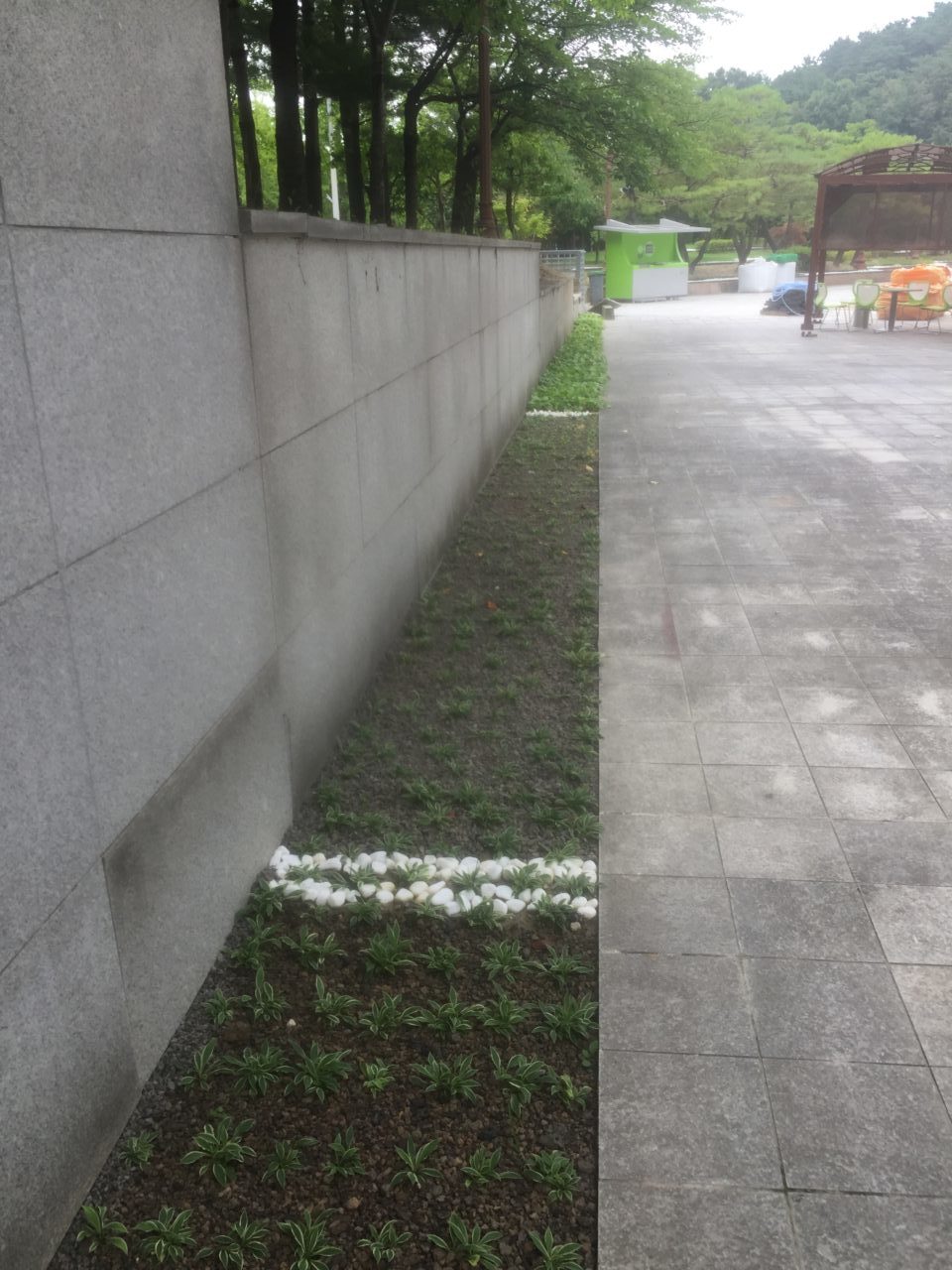




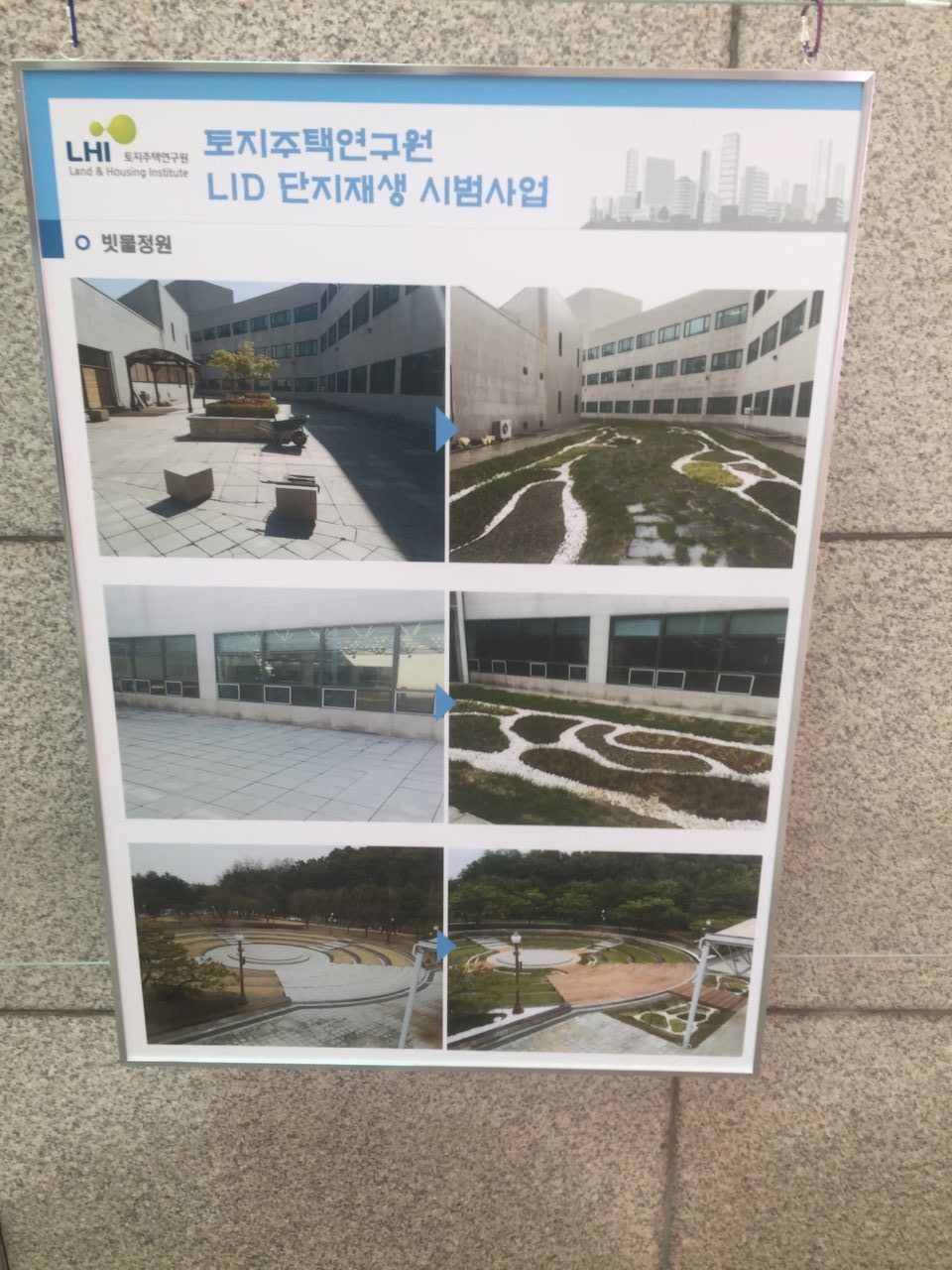
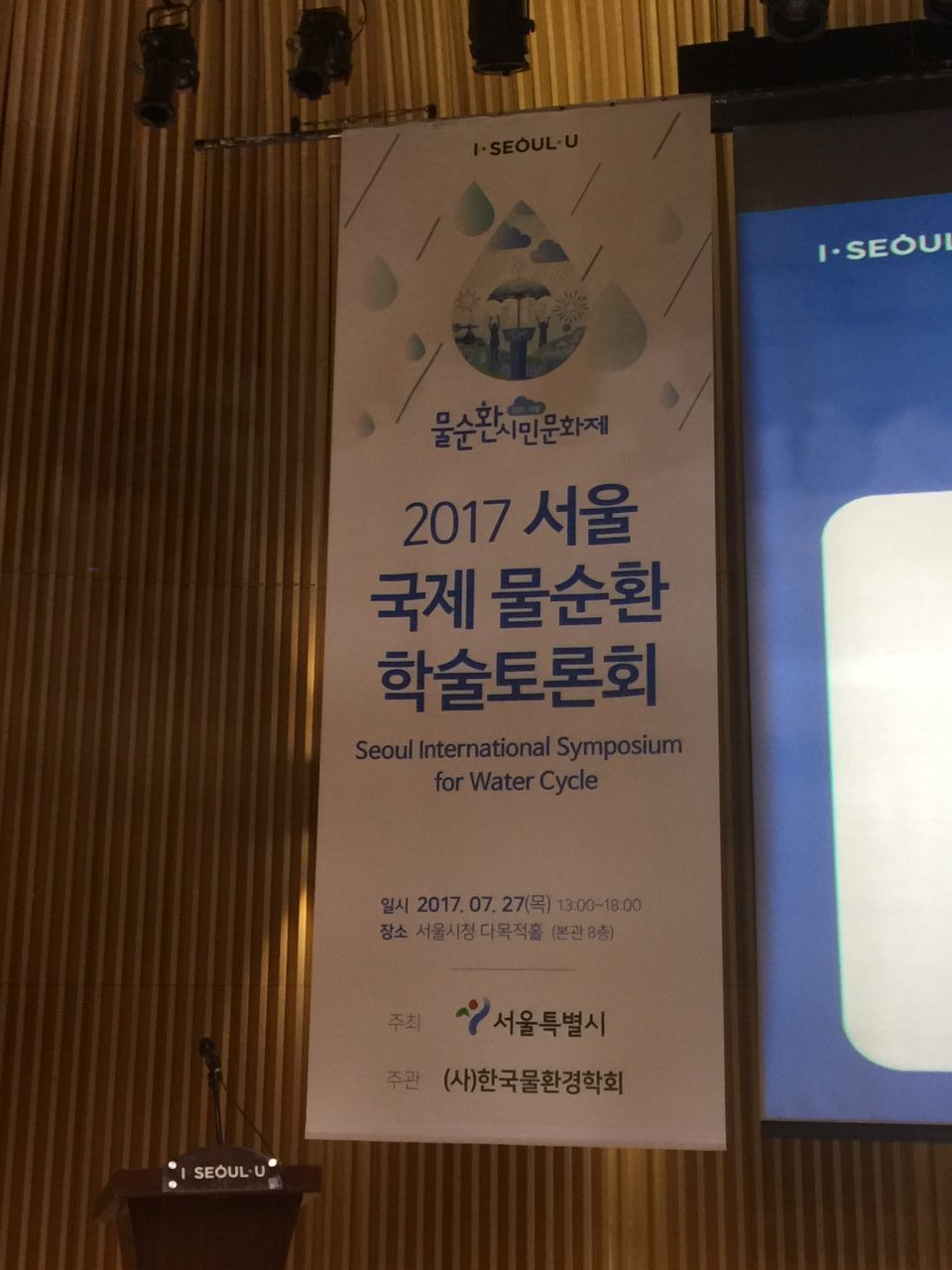
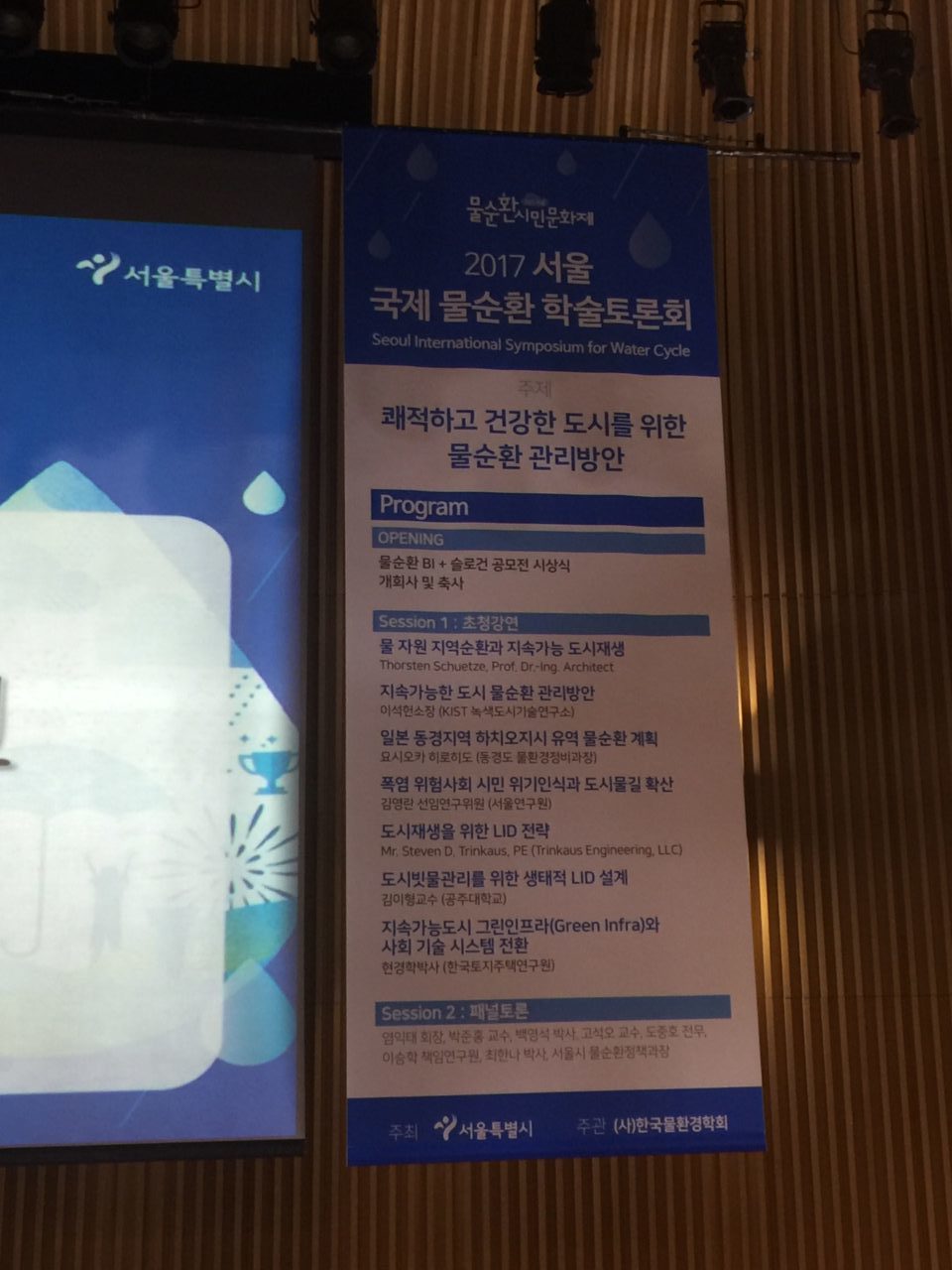

Steve was invited by Dr. Leeyoung Kim of Kongju University to make a presentation on Urban LID practices at the Seoul International Symposium for Water Cycle. This event was held at Seoul City Hall. A unique feature of the City Hall is the presence of an indoor living green wall inside the perimeter glass wall of the city hall.
Steve also made a presentation to Master and PhD candidates at Kongju University on Designing LID treatment systems. The talk focused what type of environmental information you need to properly design LID Infiltration systems, such as Bioretention and Permeable Pavement systems. After the talk, Steve traveled to the research offices of Land & Housing Institute in Daejeon at the request of Dr. Hyun, principal researcher to inspect recently installed Bioretention systems at the research institute. These locations were suggested by Steve to Dr. Hyun in 2015 during a prior visit to the research facility. While these systems are only six months old, they are functioning exceeding well, particularly from a volume reduction perspective. The researchers are just beginning to monitor the water quality improvement of the non-point source runoff directed to the systems.
Several of the Bioretention systems are located in the middle of what were previously 100% impervious courtyard areas, which have the added advantage of increasing the green space at the facility. One of the most unique installations was in a depressed Amphitheatre area. A circular Bioretention cell was installed at the bottom of the amphitheater.
The researchers are currently in the middle of installing some Bioswales in an existing paved parking lot as well as converting a portion of the main parking area to permeable interlocking pavers.
Steve was invited by Dr. Mooyoung Han, Professor of Civil & Environmental Engineering at Seoul National University to inspect the green roof system on top of the engineering building. This is a very unique green roof system in several aspects:
- The system is built up approximately 12”above the top of the roof with an underdrain system,
- The underdrain pipes have valves which can be closed to prevent any discharge from the green roof area and increase the saturated level within the soil system,
- The appears to have the effect of increasing health of the plants in green roof system as well as eliminating an overflow discharge to the conventional roof drainage system,
- A portion of the green roof has been turned into a community garden area, where members of the public can rent an area 1 meter by 2 meters for their own crops,
- Another section of the roof is also planted with potatoes and other vegetables were are harvested and donated to members of the public,
- A portion of the upper roof area has the collected and directed to a hydroponic vegetable system, where primarily lettuces are grown for consumption,
- There is also a koi pond on the roof which is refreshed with runoff collected from another portion of the roof.
Steve then traveled to Busan to meet with Dr. Hyunsuk Shin, the Director of the Korean GI/LID Research Center. Steve spent a day at the center observing ongoing work to calibrate the monitoring equipment for all of the LID and non-LID systems. The monitoring system takes readings at 1 minute intervals. At the present time, the researchers are calibrating their monitoring equipment and conducting LID experiments.
One interesting experiment was looking at the amount of evaporation which would occur from a green roof section. A meter square area was isolated in a box where the portable rainfall simulator could be placed over it and applies a particular rainfall event to the system. Under the green roof section was a tray which collected rainfall which infiltrated the system and weighed the water collected. This allows the researchers to determine the amount of the rainfall which is being returned to the atmosphere via evaporation.
During the visit, we actually experienced a rainfall event and I was able to observe the real time monitoring results. I was able to observe the rainfall intensity, rainfall amounts, amount of rainfall which was infiltrating, amount of surface runoff all at one minute intervals. It was very interesting to observe that if the monitoring was done on longer intervals, you would actually have missed some of the higher rainfall intensities.